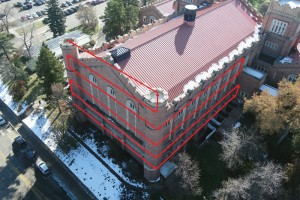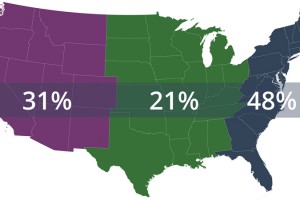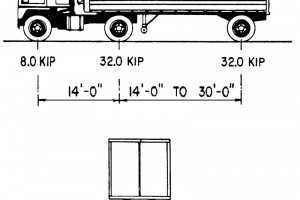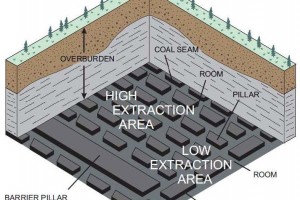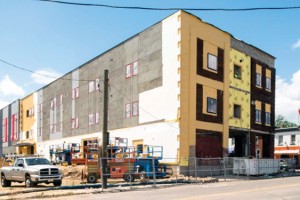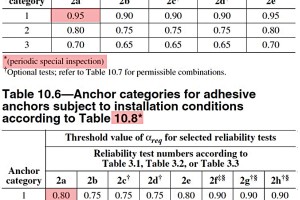There is much talk about how to engage more women to join the engineering field. From elementary schools to universities, career advisors, teachers, and special interest groups are encouraging girls and women to consider and stay in engineering. Why do we want to add more women to the ranks of engineering? Their unique perspective is key to the success of the industry. …
Review Category : Articles
For the longest time, I avoided following other structural engineering firms on LinkedIn or liking their posts. As the President of the Structural Engineers Association of Colorado, I have seen the positive impact of what engineers can do when they come together. But for some reason, I was still hesitant to celebrate the achievements of my peers publicly. Why? Mostly to avoid a perception by my supervisors and coworkers that I was thinking about leaving my current firm. Sitting at my desk a couple of months ago, on my first day back at work after attending the National Council for Structural Engineers Associations (NCSEA) Summit, I quietly proclaimed, “This stops today!!” No longer will I refrain from following or liking other firms for fear of how it might look. The week I spent in Anaheim, CA, at the Summit was magical and not just because I met Micky and Minnie. Witnessing the community of structural engineers at a national level was truly transformational. …
Assistance for Building Façade Assessment
Building owners need to routinely assess the condition of their building façades for many reasons, including compliance with façade inspection ordinances, to check for deterioration, to monitor known deterioration, and to plan for maintenance and capital repairs. Traditional methods for façade inspection include ground-based visual observations and hands-on inspection using various means of access, which both have limitations. Access to building façades for hands-on inspection can range from straightforward to very complex. The more complexity involved in accessing the façade, the higher the costs, and the less likely that building owners will routinely assess the conditions of their building façades, potentially allowing deterioration to occur unchecked. …
The author’s “Masonry Education Survey,” administered in October 2018, sought to answer two overarching questions: 1) are industry practitioners satisfied with the masonry design knowledge that graduating structural engineers bring with them into the workforce, and 2) what aspects of masonry design are most important for graduating structural engineers to master. This survey elicited passionate responses from engineers, architects, contractors, suppliers, instructors, and industry representatives involved in the design, specifying, installation, and/or manufacturing of masonry systems for buildings. This article expands on material previously presented at the 13th North American Masonry Conference, with additional survey results gathered through September 2019. …
Watch for Ten Hidden Risks in Contracts
Today, more owners and other project participants are looking for ways to transfer risk to engineering firms by inserting potentially onerous language in contracts. In many cases, such contractual exposures are not insurable under an engineering firm’s professional liability insurance or other policies, leaving the firm with potentially substantial uninsured exposures. …
Past, Present, and Future
The American Association of State Highway and Transportation Officials Load and Resistance Factor Design code (AASHTO LRFD) guides modern highway bridge design. The code includes prescriptive criteria for vehicular live load covering individual truck loads, lane loads, the likelihood of multiple lanes of traffic containing high truck loads simultaneously, and impact loading. Additionally, state-specific codes allow for special permit vehicles based on local conditions and needs. The current AASHTO live loads were put into practice in 1996, the latest in a series of updates developed to represent modern traffic and design practices. …
When underground coal mining began in the 1700s in the U.S., many of the mines were located far away from developing city infrastructure. There was little thought of potential expansion over these mined-out areas or the effects of long-term subsidence. Until the 1970s, most mine design was essentially done by rule of thumb and focused on short-term operational needs. As cities began to expand into mined-out areas, city infrastructure became exposed to the risk of damage caused by mine subsidence. There are presently 17 states which have active and abandoned underground coal mines that require significant expenditures each year to address mine subsidence risk and damage. …
Part 3: Adaptive Reuse Feasibility Analysis
This four-part series (Part 1, STRUCTURE, November 2019, Part 2, January 2020) discusses how the collapse of a building during a demolition operation in Philadelphia in 2013, which resulted in several fatalities, led to the enactment of a City Ordinance to prevent similar calamities. As a result of the Ordinance, the author became involved with the structural investigation, review of the Site Safety Demolition Plan, and Demolition Special Inspections associated with the adaptive reuse of the Apex Hosiery Company Building located in Philadelphia. …
The wheels of change turn slowly when it comes to government regulations. For federal highway infrastructure, some of the regulations for new construction have not been modified for decades, but developments in the past two years regarding the adhesive anchor industry are nothing short of a sea change. The most significant development was the issuance of a new technical advisory for bridges and structures by the Federal Highway Administration in January of 2018 (T5140.34). It establishes new guidelines for the installation and inspection of adhesives used in new and existing federal-aid projects. An additional development involves ongoing efforts by the federal government to strengthen the standards used under the Buy American Act. This article explains the recent history of state-by-state regulations in the industry, the review and adoption progress for the new regulations, and the significant impact of the developments on the formulation, specification, and use of anchoring adhesives. …
Testing, Design, and Specification
A variety of factors influence an engineer’s decision to use cast-in anchors or post-installed anchors including working principles, installation, and the impact on project timeline and budget. Above all, a licensed engineer shall hold paramount their code of ethics and the safety, health, and welfare of the public. At a time in which budget and scope have tightened for professional engineering work, it is difficult to allocate resources to sift through technical data and footnotes for a comprehensive comparison of post-installed anchoring systems. This article establishes an understanding of the chemical and physical factors that affect the performance of post-installed adhesive anchor systems. It also explains how product testing is incorporated into design calculations and provides suggestions for designing and specifying adhesive anchor systems. …



